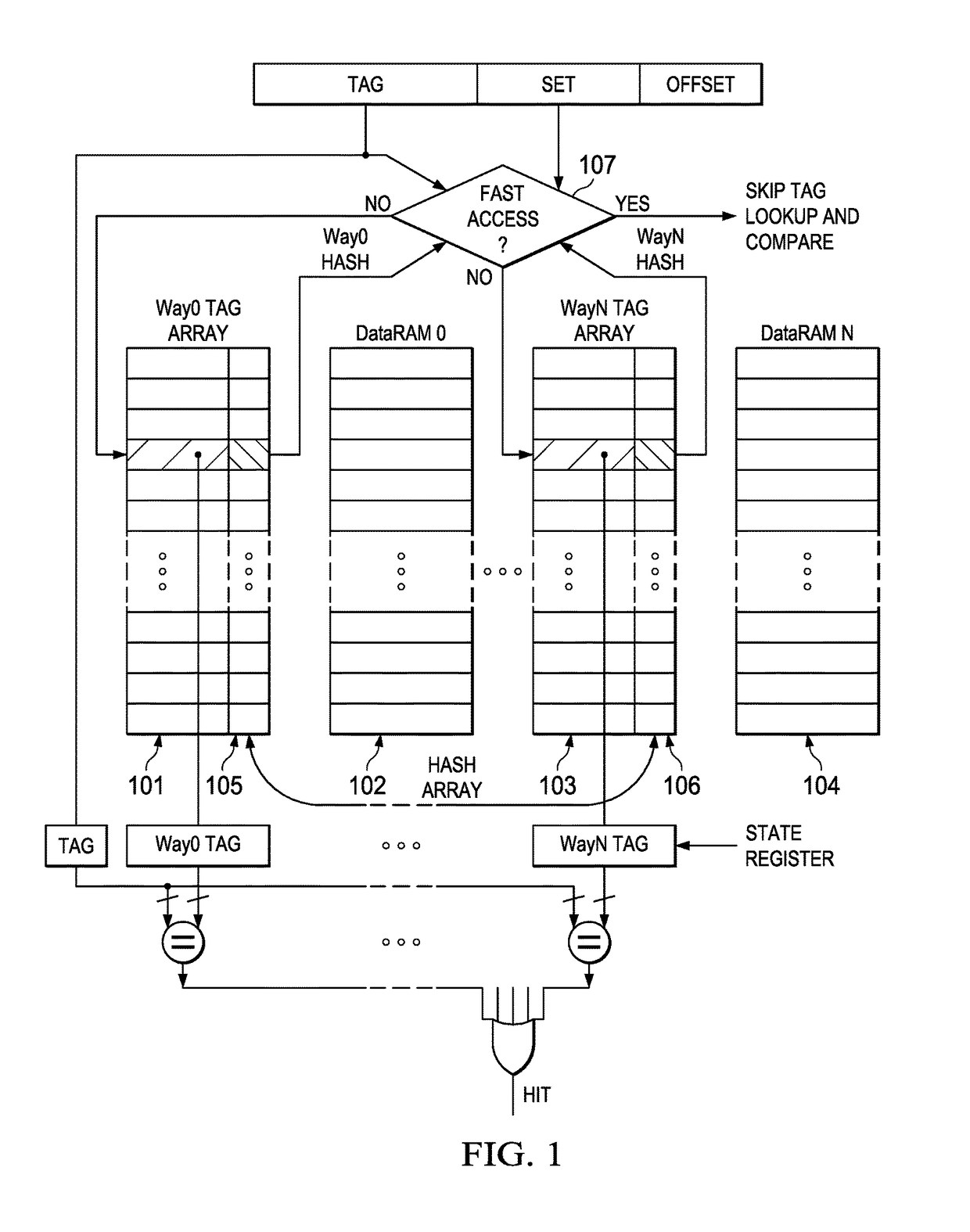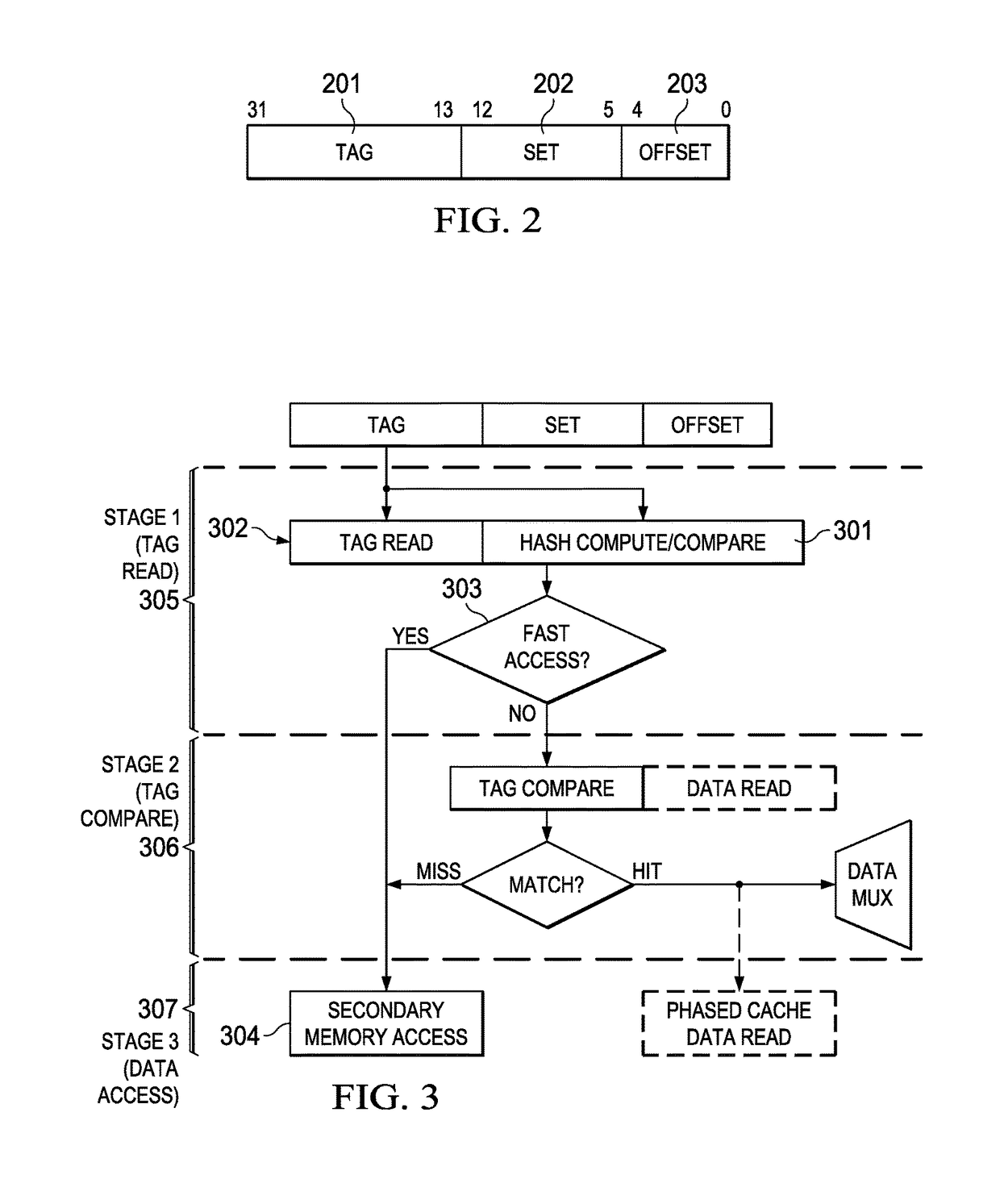Dynamic power reduction and performance improvement in caches using fast access
a technology of fast access and cache power consumption, applied in the field of cache memory, can solve the problems of increasing power consumption and increasing cache performance, and achieve the effects of reducing cache power consumption, avoiding redundant reads/comparisons, and increasing cache performan
- Summary
- Abstract
- Description
- Claims
- Application Information
AI Technical Summary
Benefits of technology
Problems solved by technology
Method used
Image
Examples
Embodiment Construction
[0021]This invention, in general, uses a hash unit to determine the possible cache ways that could contain a tag match. Thus, only these possible matching ways of a single set are queried on every cache access rather than all cache ways.
[0022]To achieve this, the hash value is stored (in discrete registers) of every tag on every cache allocation. This hash value uses significantly fewer bits than the full tag. The discrete register storage (hash array) enables a 0-cycle latency availability of the hash values for quick compare with the new access before a tag lookup. For the purpose of simplicity and ease of implementation, log2 N bits (where N=associativity) is used for the hash. The power consumption achieved is very close to direct mapped cache levels, which is the lower bound in most cases.
[0023]One major advantage of hash comparison before tag access lies in the ability to avoid the need to lookup all tag ways whose hash do not match the hash of the new access. Second, if the n...
PUM
 Login to View More
Login to View More Abstract
Description
Claims
Application Information
 Login to View More
Login to View More - R&D
- Intellectual Property
- Life Sciences
- Materials
- Tech Scout
- Unparalleled Data Quality
- Higher Quality Content
- 60% Fewer Hallucinations
Browse by: Latest US Patents, China's latest patents, Technical Efficacy Thesaurus, Application Domain, Technology Topic, Popular Technical Reports.
© 2025 PatSnap. All rights reserved.Legal|Privacy policy|Modern Slavery Act Transparency Statement|Sitemap|About US| Contact US: help@patsnap.com



